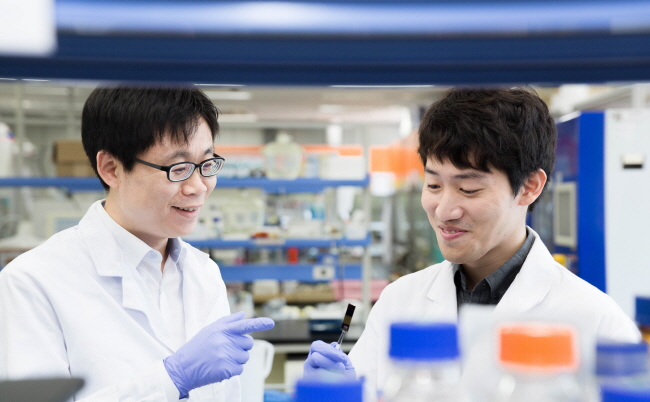A team of scientists, led by Professor Byeong-Su Kim from UNIST’s School of Natural Science has engineered a large-scale nanometer-sized (10-9m) light-emitting structure by stacking a graphene-like thin semiconductor on top of a polyelectrolyte, thereby improving the luminous efficiency by four times.
This joint research team includes Prof. Kim, Prof. Ryu Soon-min at Pohang University of Science and Technology, and Prof. M. Chhowalla at Rutger University.

Molybdenum disulfide (MoS2) is a two-dimensional (2D) semiconductor material from the transition metal dichalcogenides (TMDs) that emits more light when it is monolayer. However, because the absorption and emission of light tend to hamper with multi-layer stacking, the development of MoS2 as photoelectric devices has not been very successful.
Prof. Kim’s research team produced the first successful fabrication of multilayered MoS2 films by layer-by-layer (LbL) assembly, showing a significant enhancement of light-emitting efficiency while preserving the innate direct band gap property of MoS2 sheets individually.
Prof. Kim says that “This discovery will become a major breakthrough in light-emitting display research.” He adds “This newly-developed material will be put to good use in producing various products, like flexible displays and lightweight electronic devices.”
This research findings appeared online September 29, 2014, in Nano Letters.
Journal Reference:
1. Piljae Joo, Kiyoung Jo, Gwanghyun Ahn, Damien Voiry, Hu Young Jeong, Sunmin Ryu, Manish Chhowalla and Byeong-Su Kim.
Functional Polyelectrolyte Nanospaced MoS2 Multilayers for Enhanced Photoluminescence Nano Letters. 2014 Sept 29. DOI: 10.1021/nl502883a.














